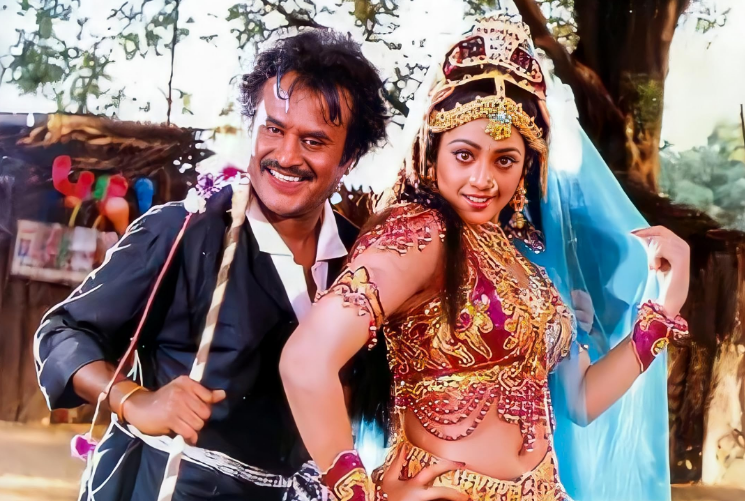For a very long time, personal taste in art and entertainment has been a way to signal to others what kind of person you are. Being a fan of a certain artist seems to automatically signify something about your character. It’s “cool” to like certain kinds of movies and musical artists — even if you don’t enjoy their work. Often, cinema or music that’s heralded as “artistic” (and thus, “good”) isn’t in the slightest bit easy to consume. But that’s also kind of the point: You have to “earn” its enjoyment. The harder it is to do so, the more sophisticated you can make yourself seem. That’s why pop music and mainstream entertainment are often looked down upon. Enjoying what’s made for the lowest common denominator means accepting that you’re “easy” to please and, therefore, inferior. However, that’s what makes the popularity of Tamil cinema in Japan stand out.
The Reception of Entertainment in India
In India, Western music is still more niche. Its enjoyment is relegated largely to a more urban and privileged crowd. However, K-pop seems to have broken all barriers of entry and found its way to the common man. This could be due to the fact that K-pop is more accessible to the average Indian than rock, metal, or even American pop music. K-pop embodies the spirit of fun that Indians seek in entertainment. It also lacks the high brow pretensions of “good taste” as its enjoyment is only rooted in its fun. Elsewhere, being a K-pop stan is bound to invite judgments from music connoisseurs who don’t think it’s “real music.” But who decides what music is “real” or “good,” anyway?

India’s tryst with K-pop goes back to the summer of 2012 when PSY’s now-classic hit “Gangnam Style” took the world by storm. Over a decade later, it’s not unusual to hear the song played at weddings, school or work events and parties, along with the usual coterie of Indian songs. In the late 2010s, India’s love for K-pop quadrupled, especially following the success of groups like BTS and BLACKPINK. K-pop flashmobs are even commonplace across India. You’re just as likely to hear a Korean song at the mall as you are an Indian or English one. K-pop, with its colorful visuals, fast-paced choreography, diverse vocals and extremely catchy hooks, has really resonated with the Indian audience. That’s because it aligns with the pre-existing appreciation for all things song and dance.
In former colonies like India, consuming literature and entertainment in English is an aspirational activity.
It’s considered “sophisticated” and therefore, “good.” K-pop and other non-Western forms of entertainment do not carry any such baggage with it. Moreover, cultural similarities of nations in the Global South means that it feels more resonant and relatable than Western-centric entertainment.
Post-pandemic, and especially following the widespread availability of 5G internet, Indians have enjoyed content from all over the world. Turkish, Chinese and Korean dramas along with Korean food, fashion, and music have made their way to millions. Even South Indian cinema, which had flown under the radar of Bollywood-centric North India, seemed to experience renewed popularity and appreciation.

Indian cinema often draws flak in the West for being, as they say, “unserious.” Most Indian films are musicals with elaborate song and dance sequences that necessitate a willing suspension of disbelief. And that’s okay. India is the leading producer of films in the world with over 2,000 films released every year. All kinds of movies are made in India, including artsy indie films without any songs (for real), but mainstream Indian cinema is for pure escapism.
Americans have their superhero films, we have our musicals. It’s unfair to criticize Indian cinema for simply trying to have a good time when the Western movie machine has been doing the same by churning out mindless content for decades. This approach to cinema, where fantasy seems to bleed into reality and characters break into elaborate dance sequences to express their feelings, is perhaps why Indian movies are so popular in other parts of the Global South.
The Fascinating Popularity of Tamil Cinema in Japan
Although most non-Indians assume that Bollywood is the only film industry in India, this isn’t true. It’s not even the largest. Over 700 languages are spoken in India, of which Hindi is the most widely spoken. Its prevalence, however, is relegated to the northern parts of the country. Bollywood produces Hindi language movies that cater to a North Indian audience.
But nearly ten large film industries, producing cinema in different languages, exist within India and it’s not unusual for popular actors and movies from one part of the country to be entirely unheard of, in another. The Tamil film industry — or Kollywood, as it’s called — is the third biggest film industry in India. Although, it’s not as popular overseas as Hindi or Telugu movies. Nonetheless, Tamil cinema has enjoyed a significant following in Japan for over two decades.

(Source: Hindustan Times)
It started in 1998 with the release of the Rajinikanth-starrer Muthu in Japan. The country was undergoing a deep recession and consumers weren’t spending like they used to. Muthu, a love triangle between a man, his zamindar, and a beautiful woman was a pure escapist fantasy. Promotional material for the film in Japan stated: “Forget about the recession. Forget about the millennium. Get rid of your worries. This is the first page of a pleasant dream that will continue for the rest of your life.”
In an article by Newsweek, editor Shinya Aoki is cited as saying,“Indian films are filled with the classical entertainment that movies used to offer.” This accurately sums up why, two decades later, Tamil superstar Rajinikanth enjoys a cult following in Japan. Thousands of dedicated fans show up to fan events and many have even learnt Tamil to feel closer to their idol.
The Power of Tamil Cinema
While the popularity of Tamil cinema in Japan is very niche, it’s a powerful reminder of how entertainment that’s considered “low brow” can still be meaningful to many. It’s impactful to help someone feel happy or forget about their worries, even for a small fraction of time. Beyond largely colonial, Western-centric notions of “good” entertainment, there exists a realm of entertainment that is purely enjoyable and amusing. There is no shame or guilt in indulging in it.
Japanese fans of Tamil cinema could leave their daily worries behind by watching a 165-minute musical with comical action sequences, zingy dialogues, kinetic costumes, and energetic dances. Similarly, over a global pandemic, Indian fans, could “escape” to Korea, where the sun always seemed to shine bright through its music and dramas. In times of crisis and duress, we all turn to the absurd because it feels the most comforting. And sometimes, hope is the most absurd thing to have.
If we look around the world we’re living in today, we seem to be facing truly unprecedented times — economically, politically and socially. Despite the endless content available across online platforms, we still yearn for a “real” fantasy: dramatic storylines, miraculous plot twists, heartfelt dialogues, and yes, happy endings. Now more than ever, we need entertainment to be entertaining. As rom-coms slowly make their way back in Hollywood and bubblegum pop witnesses a renaissance, it seems as though we’re finding our way back into the spirit of guiltless fun and enjoyment. The rest of the world is catching up to a truth the Global South seems to have always known: It doesn’t take much to have a good time.
Header: Muthu (IMDb)

